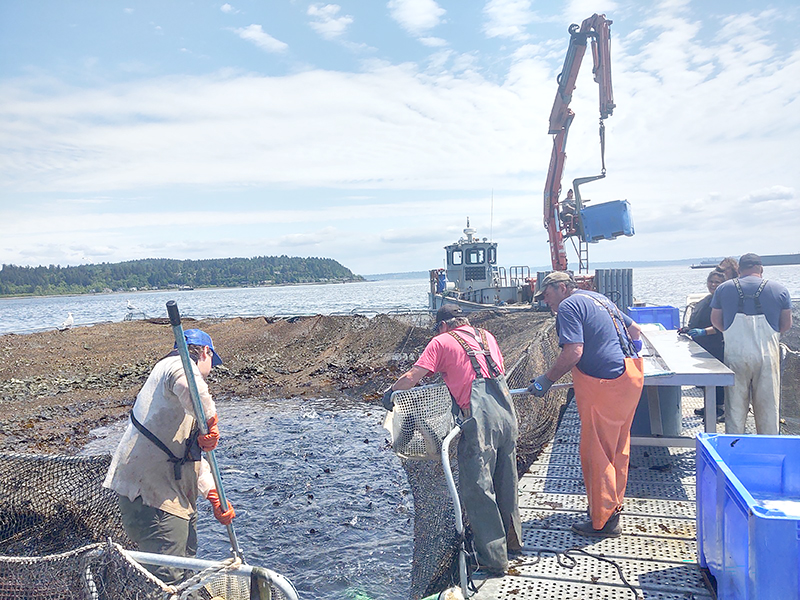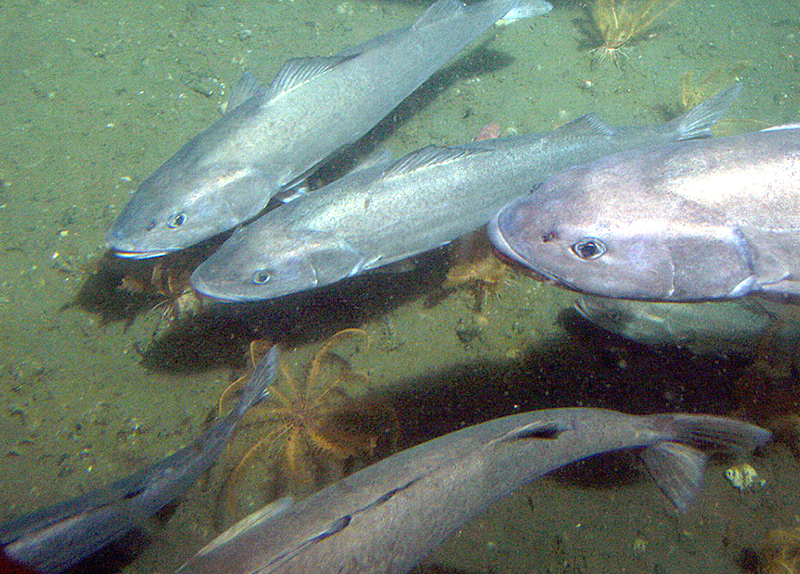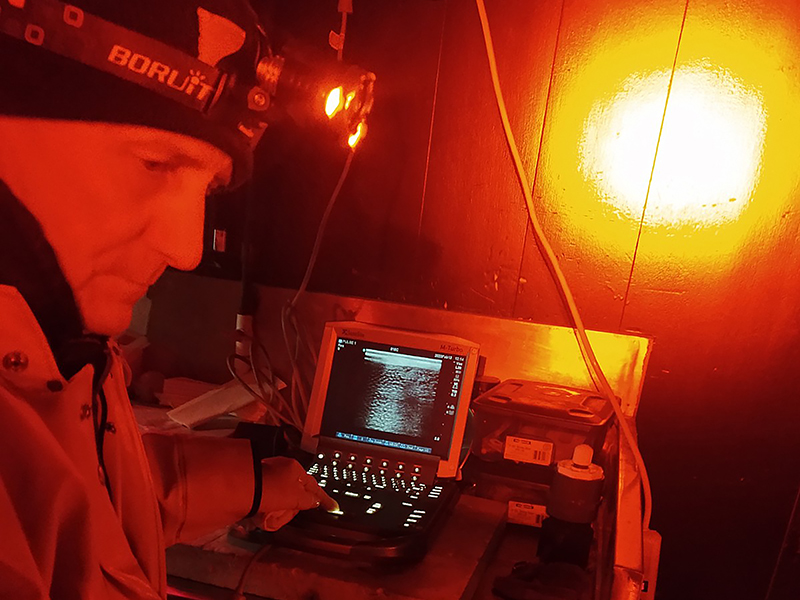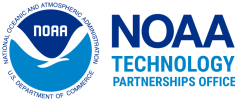The Jamestown S’klallam Tribe in the U.S. Pacific Northwest has a mantra: “What is done today, can impact seven generations from now.” The spirit of that mantra underlies a unique public-private partnership that has successfully fused science with local Native American culture and history to support sustainable aquaculture.
To commemorate Native American Heritage Month, NOAA is featuring a partnership between the Jamestown S’Klallam Tribe and the NOAA Northwest Fisheries Science Center in Seattle, Washington. The collaboration aims to advance sustainable aquaculture practices and boost tribal economic development opportunities by comparing land- and ocean-based methods for commercial production of sablefish. Also known as black cod, sablefish are native to the region and are a traditional food source for Indigenous Peoples of the Pacific Northwest

Science, economics, and culture are deeply connected and interwoven in this partnership. With an eye on the future, the project’s goal is to increase the use of science-based aquaculture in the U.S. But the partnership also looks to the past through a heritage lens, recognizing and upholding the history and traditional cultural practices of Indigenous tribal communities. The partnership is made possible through a Cooperative Research and Development Agreement between the Jamestown S’Klallam Tribe and NOAA, which is administered by the NOAA Technology Partnerships Office.
On the science side of things, figuring out how to grow sablefish on land is crucial for ensuring a sustainable supply of fish for the future. Climate change, urban development, and water pollution have all impacted the availability, quality, and viability of commercially-important fish species, and taking aquaculture innovation to the next level is of urgent importance.
The research partners have traditionally focused on growing sablefish in what are called net-pens near the ocean shore, where fish can reach market size in a fraction of the time it would take in the wild. Exploring land-grown fish may help to further increase production and monitoring of growth rates and health. Land-grown fish also ensures a safety net for replenishing wild stocks. Beyond improving food availability and security, advancing the science of sablefish aquaculture also has the added benefit of encouraging local business development through direct sales and distribution to regional businesses and communities.
This research also encourages collaboration through its close connection to other public-private partnerships. For example, nutrient output resulting from this aquaculture project is used in research on the land-based production of seaweed as part of another NOAA partnership at the research station.

“Collaboration has been the key all along,” said research partner Jim Parsons, CEO of Jamestown Seafood, LLC. “You can’t do this work in a vacuum, and the scientific staff have been extremely helpful and have been good advocates to keep pushing things forward. And they have helped us connect to other collaborators such as the University of Washington and Sea Grant. It’s been a great partnership.”
The partnership has the potential to create economic benefits beyond the Pacific Northwest region. Up to 85 percent of all the seafood consumed by Americans is imported from other parts of the world, which makes the U.S. dependent on other countries to meet the demand for fish protein. Advancing aquaculture within the U.S. is enabling local economies to flourish and to become more self-sustaining.
“Over half of the seafood production worldwide is through aquaculture, but very little of that production comes from the U.S. and domestic production”, said researcher Ken Cain, Aquaculture Program Manager at the NOAA Northwest Fisheries Science Center. “There’s a huge need to increase seafood production domestically through aquaculture.”

Beyond the science and economy, there are social aspects at play which influence the advancement of this research. Key challenges include overcoming public misconceptions about aquaculture and their impacts on the environment, as well as addressing any resulting political resistance to advancing commercial aquaculture. As researchers continue to develop aquaculture science, they must simultaneously contend with social and political pushback that can hinder their work.
Importantly, this partnership also supports local Indigenous access to and preference for eating locally-harvested fish. The relationship of local tribes, such as the Jamestown S’Klallam Tribe, to fishing is deeply interwoven into their history and identity. Local- and land-based commercial fish farming not only helps tribes achieve and maintain self-sufficiency, but the technique also has the potential to provide job opportunities for tribal community members and boost local economies.
Partnerships like this one are more successful when supported by a framework that allows the participants to be flexible, responsive, and free to experiment, while still maintaining protection of their processes and intellectual property. Cooperative Research and Development Agreements, known as CRADAs, provide that framework. CRADAs are written agreements between a private U.S. company, university, or other entity and a NOAA Laboratory or Science Center. Both partners agree to work together on a collaborative research project and use their scientific results to develop commercially-viable products and services.
Visit the NOAA Partnerships Page for additional information about the NOAA Technology Transfer Program, view a list of NOAA’s active CRADAs, and read about other CRADA success stories.
Note: Any reference obtained from this website to a specific company, product, process, or service does not constitute or imply an endorsement by NOAA.
Published on November 29, 2023 by Matthew Bryant
Media contact: suzi.webster@noaa.gov
